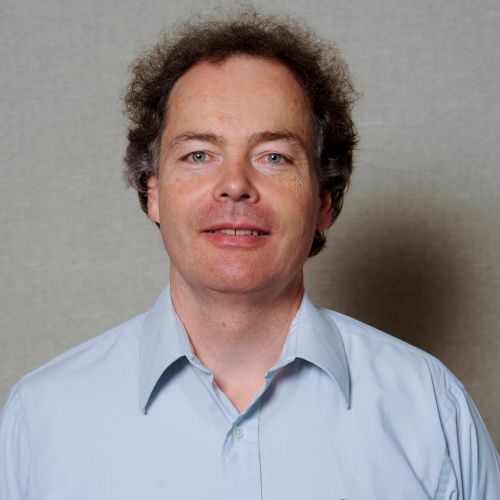Hans Hallen

Bio
Professor Hallen received his BS degree in Engineering Physics from Cornell University in 1984, and his MS and PhD degrees in applied physics from Cornell University in 1986 and 1991, respectively. At Cornell, he studied sub-micron-scale Josephson junctions, conducted photoemission studies of atomic ordering near interfaces of plasma-oxidized silicon, and hot-electron-induced nano-scale modifications of metal surfaces with a scanning tunneling microscope. During 1991-1993, he was with the Physical Research Laboratory, AT&T Bell Laboratories, Murray Hill, NJ where he developed the first scanning Hall probe microscope, and used it to study high temperature superconductivity and vortex propagation in small structures. He joined the North Carolina State University Physics Department in 1993.
Area(s) of Expertise
Professor Hallen led the group that produced the first near-field Raman images, and identified new physics in nanoscale optical spectroscopy. He first described and measured gradientfield Raman spectroscopy, important near metallic nanostructures, which complements standard near-field Raman spectroscopy. He studied nanoscale carrier dynamics in silicon: wafers and solar cells. His results identifying electron induced motion of atoms in conductors as disparate as Au and YBCO have led to a novel view of transport of few eV electrons in metals, including grain-boundary effects. He has studied microwave propagation to test long range channel prediction algorithms for wireless communications, which enable adaptive signaling - making full use of the rapidly varying wireless signaling environment. Currently he is interested in propagation of ultrawideband pulses in shadowed environments. He has developed a nano-bioprobe for localization of optical interactions within cells, such as for studies of intracellular signal transduction pathways. He has also shown that similar probes can be used to manipulate the nucleus out of and in to cells. He has active projects in nanoscale characterization with scanning proximal probe microscopes utilizing optical, electrical, and photoemission probes. He is investigating in-plane oriented molecular deposition with nanoscale lateral resolution, scanning nano-transport microscopy, surface modification for functionality, Raman lidar techniques, and novel nanoscale material approaches for 3-D packaging of RF wafers.
Publications
- Barrier/seed system for electroless metallization on complex surfaces using (aminomethylaminoethyl)phenethyltrimethoxysilane self-assembled films , JOURNAL OF VACUUM SCIENCE & TECHNOLOGY B (2023)
- Self-alignment of whole wafers using patterning for capillary forces , JOURNAL OF VACUUM SCIENCE & TECHNOLOGY B (2023)
- Early Warning of mmWave Signal Blockage Using Diffraction Properties and Machine Learning , IEEE COMMUNICATIONS LETTERS (2022)
- Room-temperature upconverted superfluorescence , NATURE PHOTONICS (2022)
- Dynamic control of reflective/diffusive optical surfaces on EGaIn liquid metal , OPTICAL MATERIALS EXPRESS (2021)
- Fluorescence nonlocality in two-dimensional Materials , Ultrafast Nonlinear Imaging and Spectroscopy IX (2021)
- Surface plasmon resonance is possible in an optical fiber tapered to a point , JOURNAL OF VACUUM SCIENCE & TECHNOLOGY A (2021)
- Unidirectional optical mechano-sensing with upconversion nanoparticles , Ultrafast Nonlinear Imaging and Spectroscopy IX (2021)
- Modified SAMs and templates for achieving self-alignment of full wafers , MICROFLUIDICS AND NANOFLUIDICS (2020)
- Early Warning of mmWave Signal Blockage and AoA Transition Using sub-6 GHz Observations , IEEE COMMUNICATIONS LETTERS (2019)